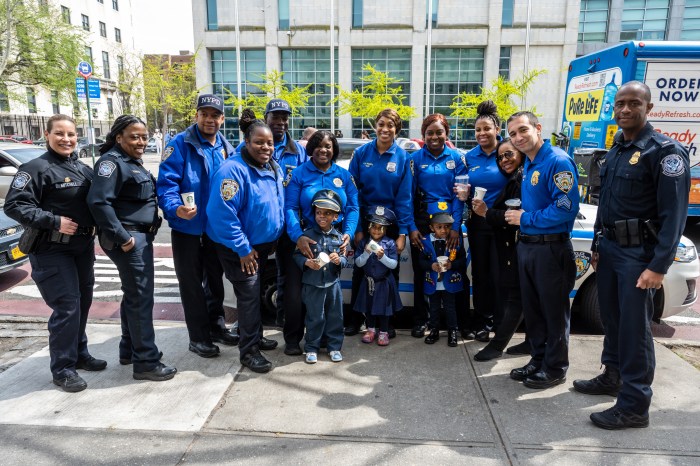Meg Spears navigated her power chair into the elevator at the Queens Center Mall in Elmhurst and shook her head. “There’s no elevator to the subway anywhere along Queens Boulevard. I think the nearest one is at Woodside,” she said. Asked whether she would take the subway if she could she said, “You bet - it’d be so much faster than the bus.”
A combination of bad knees, asthma and heart trouble confined Spears to a motorized chair four years ago. She “rolls” the five to six blocks from LeFrak City where she lives to the Queens Center Mall several times a week.
Problems arise, however, when she has to go downtown or to Jamaica for doctors’ appointments. “The bus takes three hours each way,” she said.
“Disabled Queens residents get it at both ends, the beginning of their journey is interrupted and then when they get into town there are elevators at subway stations, but they’re often not working,” Robin Einbinder, Vice President of Services for the National Multiple Sclerosis (MS) Society, New York City Chapter, said.
On March 6, Einbinder participated in an event which exposed a group of elected officials, including City Councilmember John Liu to the difficulties disabled subway riders face as part of MS Awareness Week.
“I’m 64 years young and I like to go around all the time,” said Harriet Gershon, a 40-year resident of Forest Hills. “I haven’t tried to take the Long Island Rail Road (LIRR) and would be afraid to because the gap means that on a power chair or scooter, wheels can get caught,” said Gershon a MS sufferer.
The lack of elevators at Queens stations removes the subway option, but Gershon does take buses which she said have improved since the Metropolitan Transit Authority (MTA) took over. “Before only about 40 percent of the buses on the Green Line had lifts and half the time they didn’t work,” she said.
Gershon wishes she could catch the subway because the bus trip from Forest Hills to Astoria takes one-and-a-half hours due to bus schedules and having to change and transfer. “I’d rather ride the buses than Access-A-Ride. With them, you start in Queens and get to your destination in Queens via Brooklyn,” she said.
Christopher Rosa, a Flushing resident who has Muscular Dystrophy said, “I could take the subway, but there are always issues with elevators.” His experience with the LIRR has been positive because he finds the conductors helpful in getting him over the gap. The problem is the Flushing LIRR station still has no wheelchair access and he has to “roll” to the Broadway station, two stops east of Flushing and over 30 blocks or about 1.5 miles from the Main Street station.
Einbinder remains optimistic about resolving these access issues. “We at the MS Society consider ourselves partners with the MTA,” she said.

































